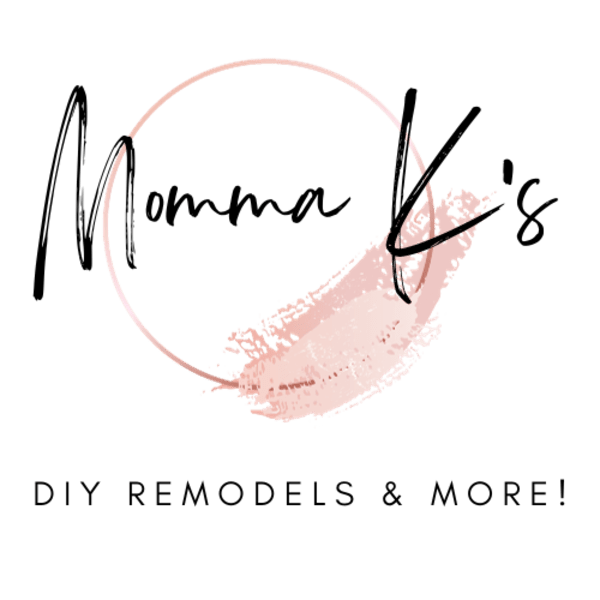
DIY projects are a great way to personalize your home, tackle small repairs, or create custom decor. But one of the most common hurdles many DIY enthusiasts face is budget. Whether you’re living on a tight budget or simply want to get the most bang for your buck, there are plenty of ways to approach DIY projects without spending a lot of money.
In this guide, we’ll walk you through some creative and budget-friendly DIY projects you can try, tips for saving money on supplies, and ways to make your projects last longer—all while staying within your budget.
Let’s get started!
1. Start With a Clear Plan
The first step in any successful budget-friendly DIY project is having a clear plan. When you’re on a budget, every decision you make—whether it’s what materials to buy, which tools to use, or how much time you’ll invest—matters. Starting with a well-thought-out plan will help prevent mistakes, overspending, and wasting valuable resources.
Budgeting Your Materials
Start by listing the materials you’ll need and estimating their costs. If you’re not sure about prices, take a trip to your local hardware or craft store to gather information. If you’re working on something like a home improvement project, be sure to include extra materials for unexpected mishaps, but be mindful not to overestimate and buy unnecessary supplies.
Repurpose or Upcycle
Look around your home for items that can be repurposed for your project. Repurposing materials you already have, like old furniture, scrap wood, fabric, or jars, can drastically reduce the cost of your DIY. For example, you can upcycle an old dresser into a new vanity or turn wine corks into a unique bulletin board.
Tip: Check out secondhand stores or online marketplaces (e.g., Facebook Marketplace, Craigslist, or thrift stores) for affordable materials that can be repurposed. You’d be amazed at what you can find!
2. Simple Home Decor Projects
If you want to freshen up your living space without spending a lot of money, there are plenty of DIY home decor projects that won’t break the bank.
DIY Wall Art
You don’t need to spend hundreds of dollars on art to add personality to your walls. Making your own wall art is a fun, affordable, and customizable way to decorate. Here are a few ideas for cheap, stylish art:
- Canvas Prints: You can pick up a cheap canvas at a craft store and either paint it yourself or print out your favorite photo using a home printer. If you’re feeling artistic, try abstract painting or geometric designs.
- Framed Prints: Purchase inexpensive frames and print free downloadable artwork from websites like Unsplash, Pexels, or Canva. Alternatively, cut out images from old magazines, books, or calendars and frame them for a more eclectic look.
- Macramé Wall Hangings: Macramé is a great way to add texture and interest to your walls without spending much. All you need is some basic cotton cord and a wooden dowel to create a beautiful boho-inspired wall hanging.
Tip: Shop at dollar stores for cheap frames, canvas, and other basic materials. Even thrift stores often have inexpensive frames you can repurpose!
DIY Pillows and Throw Blankets
Adding textiles like throw pillows or blankets can instantly update the look of your living space. Making your own is a great way to add a personal touch without spending a lot of money.
- DIY Pillow Covers: Instead of buying expensive designer pillow covers, purchase affordable fabric (or even repurpose old clothes) and sew your own pillowcases. If you don’t know how to sew, you can use fabric glue to make no-sew pillow covers.
- Knitted or Crocheted Throws: If you’re familiar with knitting or crocheting, you can make a beautiful throw blanket with just a few skeins of yarn. You can also make scarves, mittens, or pillows from yarn. If you’re a beginner, there are tons of online tutorials to help you get started.
Tip: Use upcycled fabrics (old t-shirts, curtains, or sheets) for a budget-friendly fabric option.
3. Furniture Makeovers
Furniture can be one of the most expensive purchases in a home. However, you can easily transform old furniture into something new and stylish with a little creativity and elbow grease.
Repurpose Old Furniture
Don’t throw out old furniture just because it looks worn or outdated. Instead, give it new life with a coat of paint or a simple redesign. Here are a few ideas:
- Chalk Paint Makeovers: Chalk paint is inexpensive and easy to use, and it works wonders on furniture. Use it to update an old dresser, cabinet, or coffee table. You can leave it distressed for a shabby-chic look or finish with a wax sealant for a smooth, polished surface.
- Reupholster Chairs: Reupholstering an old chair can seem daunting, but it’s relatively simple, and it can save you a lot of money. Choose an affordable, durable fabric to recover the seat and back of your chair, and you’ll have a completely new piece of furniture for a fraction of the cost of buying new.
Tip: Use spray paint for furniture projects—it’s cheaper, quicker, and gives a smooth finish on surfaces like metal, plastic, and wood.
Create Your Own Shelving
Building your own shelves is a practical way to save money while adding storage and organization to your home. You can create floating shelves with just a few basic materials:
- Wooden Planks: Purchase cheap wooden planks or repurpose old wood. For a rustic look, you can distress the wood using sandpaper or a hammer to give it a weathered, vintage appearance.
- Brackets: Look for metal brackets in the hardware section of your local store or use upcycled items like sturdy wooden crates or leather straps to create creative supports for your shelves.
Tip: Consider using old crates or wooden pallets to create unique shelving units. These materials are often available for free or at a very low cost.
4. DIY Outdoor Projects
Your backyard or balcony doesn’t have to cost a fortune to become your outdoor oasis. With some budget-friendly DIY projects, you can create a relaxing space on a budget.
DIY Planters
Instead of buying expensive decorative planters, you can create your own using inexpensive materials. Here are a few ideas:
- Wooden Crates: Wooden crates make excellent planters. Simply stack and secure them, then add soil and plants. You can also paint them to match your outdoor decor.
- Tin Cans: Repurpose empty tin cans by decorating them with paint, rope, or fabric. They make excellent small planters for herbs, flowers, or succulents.
- Concrete Planters: If you want a modern look, you can create your own concrete planters using a simple DIY mold. All you need is some cement and a container to form the shape.
Tip: Check local recycling centers or ask your neighbors for old crates, containers, or cans you can repurpose as planters.
Upcycled Outdoor Furniture
Creating outdoor furniture doesn’t have to involve high-end materials. You can make your own seating and tables from simple, repurposed items:
- Pallet Furniture: Wooden pallets are often available for free or at a low cost, and they can be used to make couches, tables, or even bed frames for your outdoor space. Simply sand the pallets, add cushions or a mattress, and you’ve got functional furniture.
- Concrete Blocks: Create a simple, low-cost bench or table by stacking concrete blocks and adding a wooden top or seat. It’s an affordable, minimalist solution that will last for years.
Tip: Be sure to protect any wooden outdoor furniture with a coat of outdoor paint or sealant to help it withstand the elements.
5. Save Money on Tools and Supplies
Even with the best intentions, the cost of tools and materials can add up quickly. Here are a few ways to cut costs when buying supplies:
Shop Sales and Discounts
Many hardware stores offer seasonal sales or clearance items. Keep an eye out for discounts, especially around major holidays, when many stores mark down tools, paint, and other materials.
Borrow or Rent Tools
Instead of buying tools that you may only use once, consider borrowing from a friend or renting from a tool library. Many communities have places where you can rent power tools, ladders, and other equipment for a fraction of the cost of purchasing them.
DIY Toolkits
For smaller projects, you don’t need an extensive tool collection. Start with a basic DIY toolkit that includes a hammer, screwdriver set, tape measure, utility knife, and pliers. As you progress in your DIY journey, you can gradually add more specialized tools.
6. General Tips for Budget-Friendly DIY Projects
- Use What You Have: Before heading out to buy new materials, take a look at what you already own. Old fabrics, furniture, or even scrap wood can be transformed into something useful.
- Use Coupons and Cashback Offers: Many hardware stores and craft shops offer coupons or cashback promotions. Look for online deals or sign up for store newsletters to get discounts.
- DIY for Gifts: Instead of purchasing expensive gifts, why not try your hand at making something? Handmade gifts are often more meaningful and can be far less costly than store-bought items. Try making candles, soap, or knitted scarves for friends and family.
Conclusion
DIY doesn’t have to be expensive, and with a little creativity and resourcefulness, you can create beautiful and functional projects without breaking the bank. By planning carefully, repurposing materials, and focusing on simpler projects, you can enjoy the satisfaction of creating something with your own hands—while keeping costs low. Whether you’re sprucing up your home, making outdoor furniture, or crafting decor, budget-friendly DIY offers endless possibilities.
So gather your tools, get inspired, and start creating! Happy DIY-ing!








